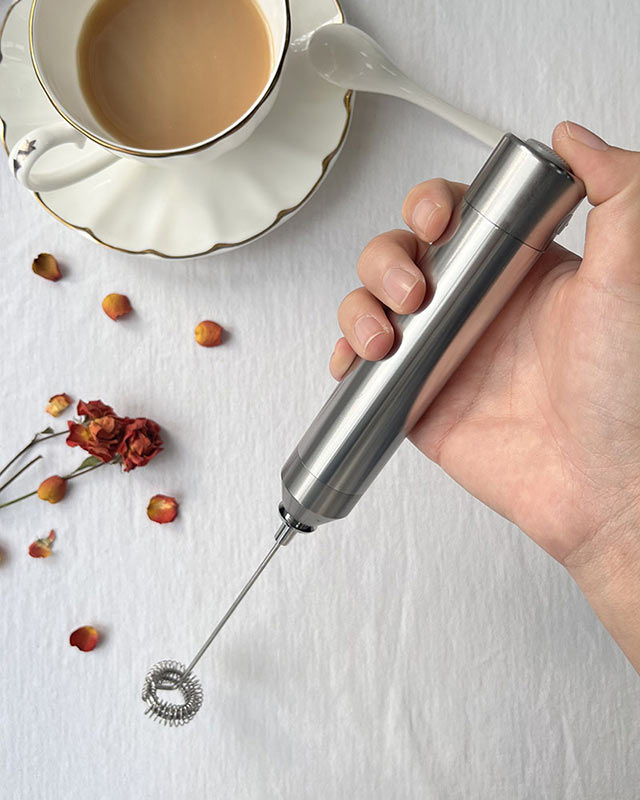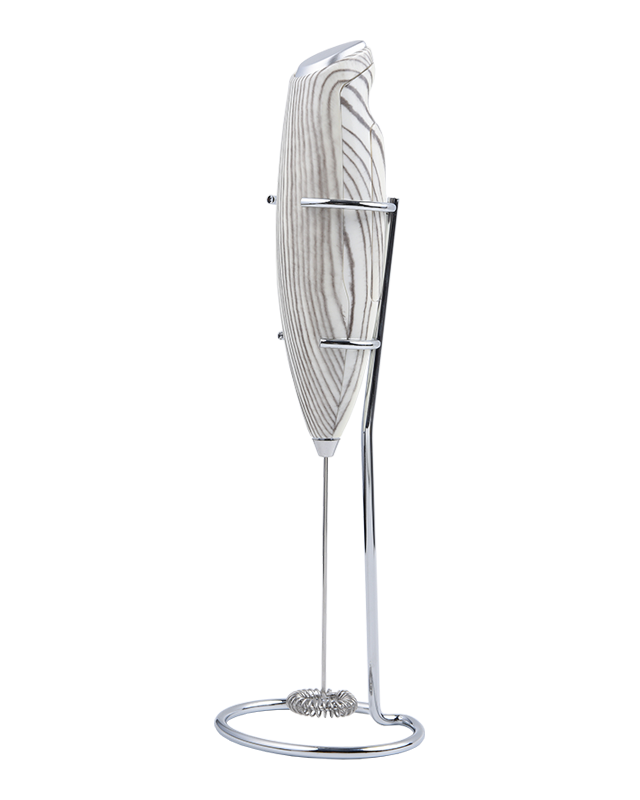Comparing electric milk frothers to manual frothing methods involves several factors:
Speed: Electric milk frothers are engineered with powerful motors and specially designed frothing mechanisms to expedite the frothing process. These devices can whip milk into a velvety foam within seconds, making them exceptionally efficient for high-volume environments such as busy coffee shops, restaurants, or offices where speed is paramount. Conversely, manual frothing methods, which rely on the user's physical effort, are inherently slower. Whether using a handheld frother, a pump-style frother, or a manual whisk, the process of achieving a desirable froth consistency can take considerably longer, especially when frothing large quantities of milk.
Consistency: Electric milk frothers excel in delivering consistent results batch after batch. Their automated operation ensures that each serving of frothed milk maintains the same texture, density, and quality, regardless of who operates the device. This consistency is crucial for maintaining the standard of beverages in commercial settings, where customers expect uniformity in taste and presentation. Manual frothing methods, while capable of producing excellent foam when executed skillfully, often yield inconsistent results due to variations in technique, arm strength, and experience among users. Achieving uniformity in foam texture can be challenging, particularly in establishments with multiple baristas or staff members.
Ease of Use: Electric milk frothers are designed with user-friendliness in mind, offering intuitive controls and straightforward operation. With just the press of a button or the flip of a switch, users can froth milk effortlessly, regardless of their level of expertise. This simplicity makes electric frothers ideal for environments where staff turnover is high or where employees may have varying levels of training. In contrast, manual frothing methods require more skill, practice, and coordination to master. Users must learn the proper technique for holding and maneuvering the frothing tool, as well as the optimal speed and motion for achieving the desired foam consistency. This learning curve can be time-consuming and may result in inconsistencies until proficiency is attained.
Control: Manual frothing methods afford users greater control over the frothing process, allowing them to fine-tune various parameters to achieve custom foam textures and densities. Whether using a handheld whisk, a pump frother, or a steam wand, skilled baristas can manipulate factors such as frothing speed, angle, and duration to create a wide range of foam styles, from airy microfoam for lattes to dense, creamy foam for cappuccinos. This level of control is prized in specialty coffee shops and artisanal cafes where attention to detail and customization are valued. While some electric milk frothers offer adjustable settings for foam density or temperature, they may not provide the same level of nuanced control as manual methods, limiting their suitability for enthusiasts or professionals seeking precise customization.
Versatility: Manual frothing methods offer unparalleled versatility, accommodating a wide range of containers, milk types, and frothing techniques. Whether frothing milk in a pitcher, a mug, or directly in the coffee cup, users have the flexibility to choose the vessel that best suits their needs and preferences. Additionally, manual frothing methods are compatible with various milk types, including dairy, non-dairy alternatives, and plant-based options like almond, soy, or oat milk. This versatility is particularly valuable in environments where dietary preferences or restrictions are common, allowing users to cater to a diverse range of tastes and preferences. In contrast, electric milk frothers may have limitations in terms of container size and milk type compatibility. Some models may struggle to froth non-dairy milks or may require specific container sizes for optimal performance, limiting their versatility in certain applications.
Milk Frother, Milk Foamer, Coffee Mixer, Mini Mixer, Stirrer, Whisk EP-568A-5




 English
English
 Français
Français
 Español
Español
 Deutsch
Deutsch
 日本語
日本語





























